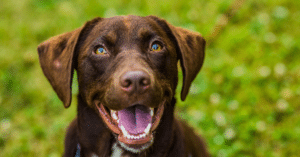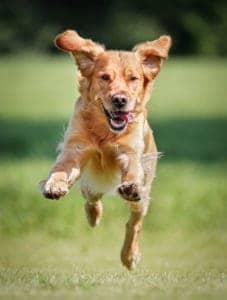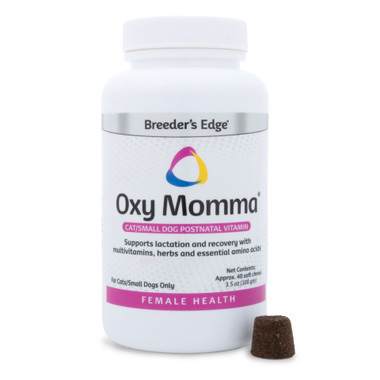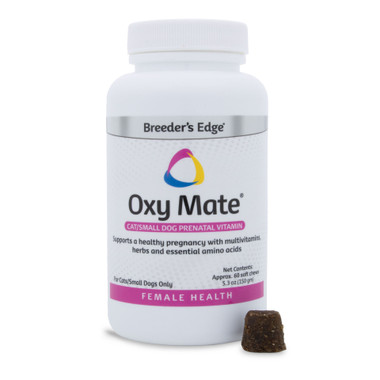2024 New Years Resolutions for Dogs and Their Owners
Estimated 0 min read

Dog ready for the new year
New Year’s resolutions often bring to mind gym memberships and healthier diets, but what about our canine companions? Picture a 2024 where your dog not only chases its tail but also embraces healthier habits and better behavior. This guide dives into enhancing your dog’s life, focusing on health, behavior, and emotional well-being. Let’s ensure the coming year is as fulfilling for your dog as it is for you, and let’s foster a deeper, more understanding relationship between you and your furry family member.
Easy Things to Keep in Mind for Your Dog in 2024
- Regular exercise and vet checkups are crucial for a dog’s physical health and detecting early signs of illness
- Positive reinforcement in training enhances behavior and strengthens the human-dog bond
- Socialization and mental stimulation are key to a dog’s emotional well-being and confidence
Prioritize Your Dog’s Health

Enjoying the fresh air
As the calendar turns to a new year, it’s not just us humans who can benefit from a fresh start and renewed focus on health and wellness. Our canine companions, with their wagging tails and boundless energy, deserve an equal share of attention to ensure they’re at their happiest and healthiest. Embarking on this journey requires a blend of regular physical activity, vigilant healthcare, and a keen eye on their nutritional needs.
The cornerstone of a dog’s health is undoubtedly regular exercise. Just like humans, dogs need physical activity to maintain a healthy weight and to keep their cardiovascular system in top shape. The joy of a daily walk or a game of fetch goes beyond mere physical benefits; it’s a chance for dogs to explore, experience new stimuli, and bond with their owners. This physical activity, however, isn’t a one-size-fits-all solution. Each breed has its unique exercise needs, from the high-energy sprints of a Border Collie to the leisurely strolls preferred by a Bulldog. Understanding these needs is crucial in tailoring an exercise routine that keeps your dog both physically fit and mentally stimulated.
Checkups

Take you pup for a check up
Alongside exercise, regular wellness checkups play a pivotal role in a dog’s health. These checkups are more than just routine examinations; they’re opportunities for early detection of potential health issues. Vets can assess everything from joint health to signs of dental disease, which, if left unchecked, can lead to more serious complications. In fact, dental health in dogs is often a neglected area, yet it’s vital for their overall well-being. By the age of three, most dogs show signs of dental disease, which can lead to pain, inflammation, and even systemic health issues. Incorporating daily teeth brushing into your dog’s routine can prevent these problems and also serve as a bonding experience.
Nutrition, of course, is the third pillar of a dog’s health and wellness. The adage “you are what you eat” holds as true for dogs as it does for humans. A balanced diet, tailored to the dog’s age, breed, and health requirements, is essential. This means resisting those puppy-dog eyes begging for table scraps, which often are more harmful than beneficial. High-fat, sugary human foods can lead to obesity and associated health problems like diabetes and arthritis in dogs. Instead, focusing on high-quality dog food and healthy treats will ensure they’re getting the right balance of nutrients.
Train Your Dog

Dog catching a treat for a good job done
Embarking on the journey of behavioral training and nurturing good habits in dogs is akin to unlocking a treasure trove of mutual understanding and respect between dogs and their owners. This journey, while filled with challenges, is also replete with moments of joy and breakthroughs that strengthen the bond between a pet and its human. It’s a path that requires patience, consistency, and a deep understanding of canine psychology.
At the heart of dog training lies the concept of positive reinforcement, a method that shapes behavior by rewarding desired actions. This technique is not just about doling out treats; it’s a scientifically backed approach that taps into the basic learning processes of dogs. When a dog performs a desired behavior, such as sitting or staying, and receives a reward, it’s more likely to repeat that behavior.
Social Interactions
One common challenge that dog owners face is managing their pet’s tendency to jump on guests. While this behavior stems from a dog’s natural inclination to greet face-to-face, it can be overwhelming for people. Teaching a dog to sit for greetings is a practical solution. This training involves guiding the dog to understand that sitting leads to positive outcomes like attention and treats. It’s a process that requires patience and repetition, but the result is a well-mannered dog that respects boundaries.

Get your dog to socialize
Another aspect of dog behavior that often goes unnoticed is the significance of their social interactions. Dogs are inherently social animals, and their interactions with other dogs and humans play a crucial role in their mental and emotional well-being. Socialization involves exposing dogs to various people, animals, and environments in a controlled and positive manner. This exposure helps dogs develop confidence and reduces fear and anxiety in new situations. It’s a critical component of their development, especially in the early stages of their life.
Training also extends to more challenging behaviors like leash pulling. Dogs pull on the leash for various reasons, including excitement and the desire to explore. Teaching a dog to walk calmly on a leash involves training them to understand that walking by the owner’s side leads to rewards. This training not only makes walks more enjoyable but also ensures the safety of both the dog and the owner.
Enhance Your Dog’s Mental Health
When we think about the emotional and mental well-being of our dogs, it’s a tapestry woven with various threads of care, each as important as the next. Understanding and nurturing this aspect of their lives leads to a harmonious and fulfilling relationship between dogs and their owners.

Playing catch is a great way to get your dog exercising
Engaging in play is a cornerstone of a dog’s emotional health. It’s a joyful expression of their natural behaviors and an essential activity for mental stimulation. Playtime, whether it involves a spirited game of fetch or solving a challenging puzzle toy, keeps a dog’s mind active and engaged. This mental exercise is crucial in maintaining cognitive sharpness and preventing boredom, which can sometimes lead to undesirable behaviors.
Quality time spent together also strengthens the bond between pet and owner. This bonding time can take many forms, from leisurely walks to simply relaxing together at home. It’s during these moments that dogs often feel most loved and secure, reinforcing their sense of belonging and well-being.
Self-care routines also play a significant role in a dog’s emotional health. Activities like grooming, which includes brushing and baths, not only keep them physically comfortable but also serve as soothing experiences that can reduce stress and anxiety. These routines provide an opportunity for dogs to receive gentle, caring attention, fostering a sense of calm and contentment.
In addition to these activities, providing a stable and predictable environment is key to a dog’s emotional well-being. Dogs thrive on routine, as it gives them a sense of security and order. Regular feeding times, exercise schedules, and consistent rules help create a stable environment that supports a dog’s mental health.
Do Everything You Can to Keep Your Dog Safe

Microchip your dog just in case they wander
In the journey of ensuring a fulfilling and safe year for our dogs, it’s essential to focus on aspects of safety and preparedness. These elements play a pivotal role in not just protecting our furry friends but also in providing them with a secure and nurturing environment.
Microchipping and ensuring up-to-date identification is a fundamental step in safeguarding your dog. A microchip is a tiny device, no larger than a grain of rice, implanted just under the skin. It stores a unique ID number that can be read by a scanner and linked to your contact information in a database. This technology significantly increases the chances of a lost dog being reunited with its owner. It’s a simple procedure that serves as an invaluable safety net, offering peace of mind that your pet can be identified and returned to you if they ever wander off.
In addition to microchipping, regular checks and updates of your dog’s identification tags are crucial. These tags, attached to their collar, provide immediate contact information and can be the first line of defense if your dog gets lost. Ensuring that these tags are always up-to-date and securely attached is a small but vital step in your dog’s safety.
Harmful House Hazards

Keep your house safe for your dog
Dog-proofing your home is another key aspect of ensuring your pet’s safety. This involves creating a safe environment by removing potential hazards. Dogs are naturally curious and may explore or chew on objects that could be harmful to them. Securing electrical cords, keeping toxic foods and plants out of reach, and ensuring that small objects that could be swallowed are not left within their reach are all important measures. This proactive approach prevents accidents while also helping your dog feel less stressed in their environment.
Furthermore, regular reassessment of your home environment for potential dangers is an ongoing process. As seasons change or as your dog grows and their habits evolve, different hazards may present themselves. Keeping a vigilant eye on your living space and making necessary adjustments is a continuous aspect of responsible dog ownership.
By focusing on these safety and preparedness measures, we create a secure foundation for our dogs’ lives. This approach helps to both protect them from physical harm and also contributes to their overall well-being, knowing they are in a safe and caring environment.
Learn from Your Dog

Happy dog, happy owner
In our journey with our canine companions, there’s a unique opportunity to learn and grow personally, inspired by the very traits that make dogs such beloved members of our families. This section delves into the ways we can draw inspiration from our dogs to enhance our own lives, fostering a deeper connection with our pets and enriching our personal experiences.
Dogs, with their innate ability to live in the moment, teach us a valuable lesson about mindfulness. Observing our dogs as they explore the world with unbridled curiosity and joy, we’re reminded of the importance of being present. They don’t dwell on the past or worry about the future; they simply enjoy the here and now. This approach to life encourages us to appreciate the small moments and find joy in everyday experiences, enhancing our overall sense of well-being.
Listening is another area where we can learn from our dogs. Dogs are exceptional listeners, offering their undivided attention and presence. They don’t interrupt or judge; they simply listen. Emulating this behavior in our interactions with others can lead to more meaningful and empathetic connections. Active listening fosters understanding and strengthens relationships, both with our pets and with the people in our lives.
Self Care

New adventures are good for you and your pup
Staying active and embracing new experiences are also lessons we can learn from our dogs. Dogs are naturally curious and love to explore, whether it’s a new walking route or a different game. This enthusiasm for new experiences can inspire us to step out of our comfort zones and try new things, leading to personal growth and a more fulfilling life.
Self-care is another aspect where dogs excel. They instinctively know when to rest and how to take care of their needs. Observing this can remind us of the importance of looking after our own well-being. Prioritizing self-care, whether it’s through rest, hobbies, or spending time in nature, is crucial for maintaining a balanced and healthy life.
Incorporating these lessons from our dogs into our daily lives both enhances our personal development and also deepens the bond we share with our pets.
As we journey through another year with our beloved canine companions, it’s clear that the path to their happiness and health is a shared adventure, rich with learning and growth for both pet and owner. Each step we take, inspired by our dogs’ innate wisdom, brings us closer to understanding their needs and deepens the bond we share.
Banixx Pet Care and Dog Blog
At Banixx, we’re committed to being a part of this journey with you. Our platform is a treasure trove of insights and tips, dedicated to enhancing the lives of dogs and their human families.
We invite you to return to Banixx, where we continuously explore new ways to ensure your dog’s well-being, helping you create a fulfilling and joyful life together. Of course, we already know that you care a lot about your dog’s health – otherwise you wouldn’t be reading this blog! That’s why we hope you’ll come back to our blog to learn more about how to keep your furry, four-legged friend happy and healthy. If, on the other hand, you are interested ifBenadryl is safe for dogsorwhat to do if you dog has diarrhea, yes, we cover that too. Or are you interested in more quirky items? such as why ourcanines cuddle, yep, we’ve got that covered.
Here’s to a year of discovery, health, and happiness with your furry friend! ?
Sources
thewildest.com/dog-lifestyle/dog-new-years-resolutions
pawlicy.com/blog/new-years-resolutions-for-dog/
therapydogs.com/new-years-resolutions-for-dog-owners/
akc.org/expert-advice/training/a-dogs-guide-new-years-resolutions/
New Year’s Resolutions For Dog Owners

















